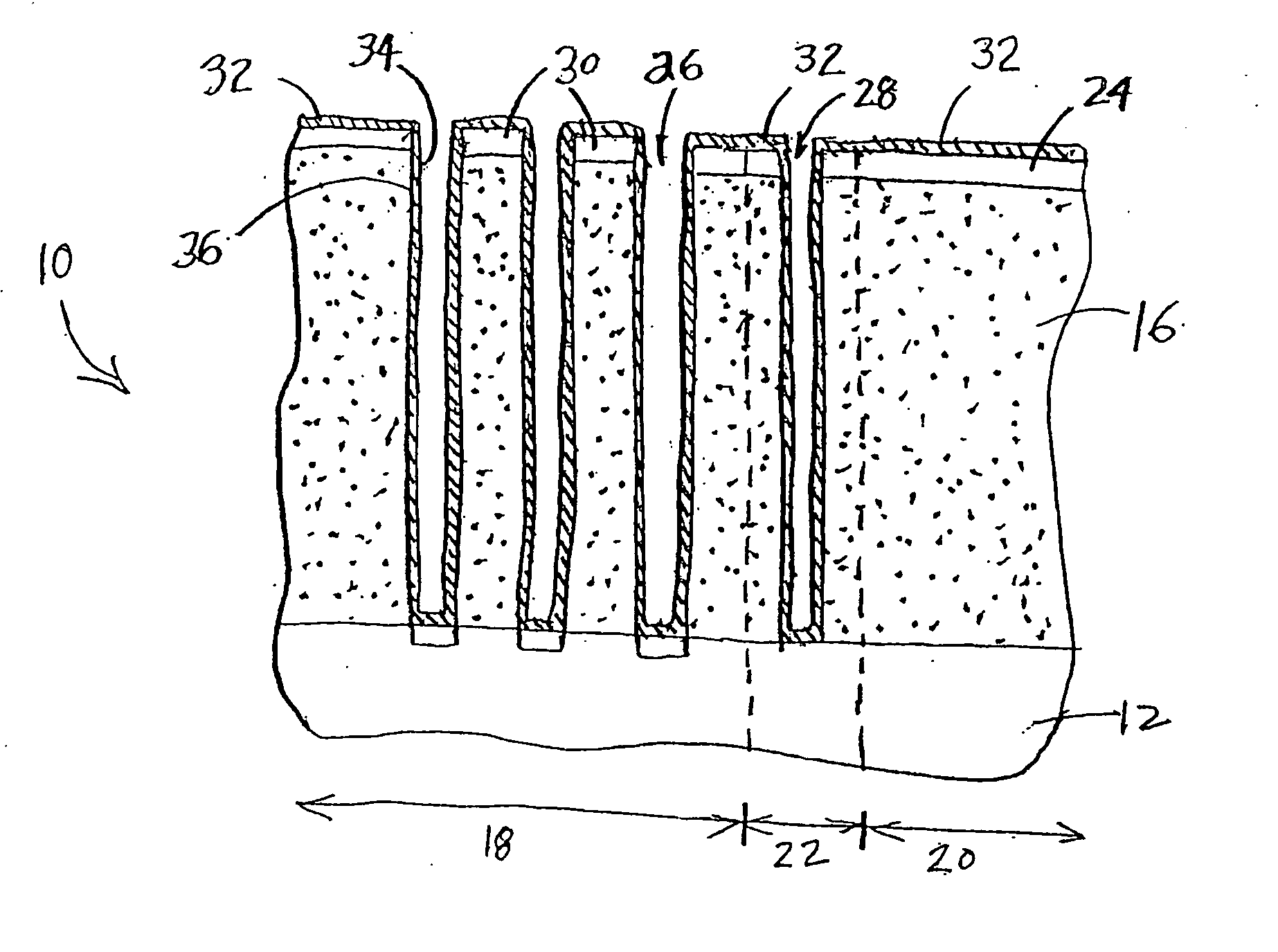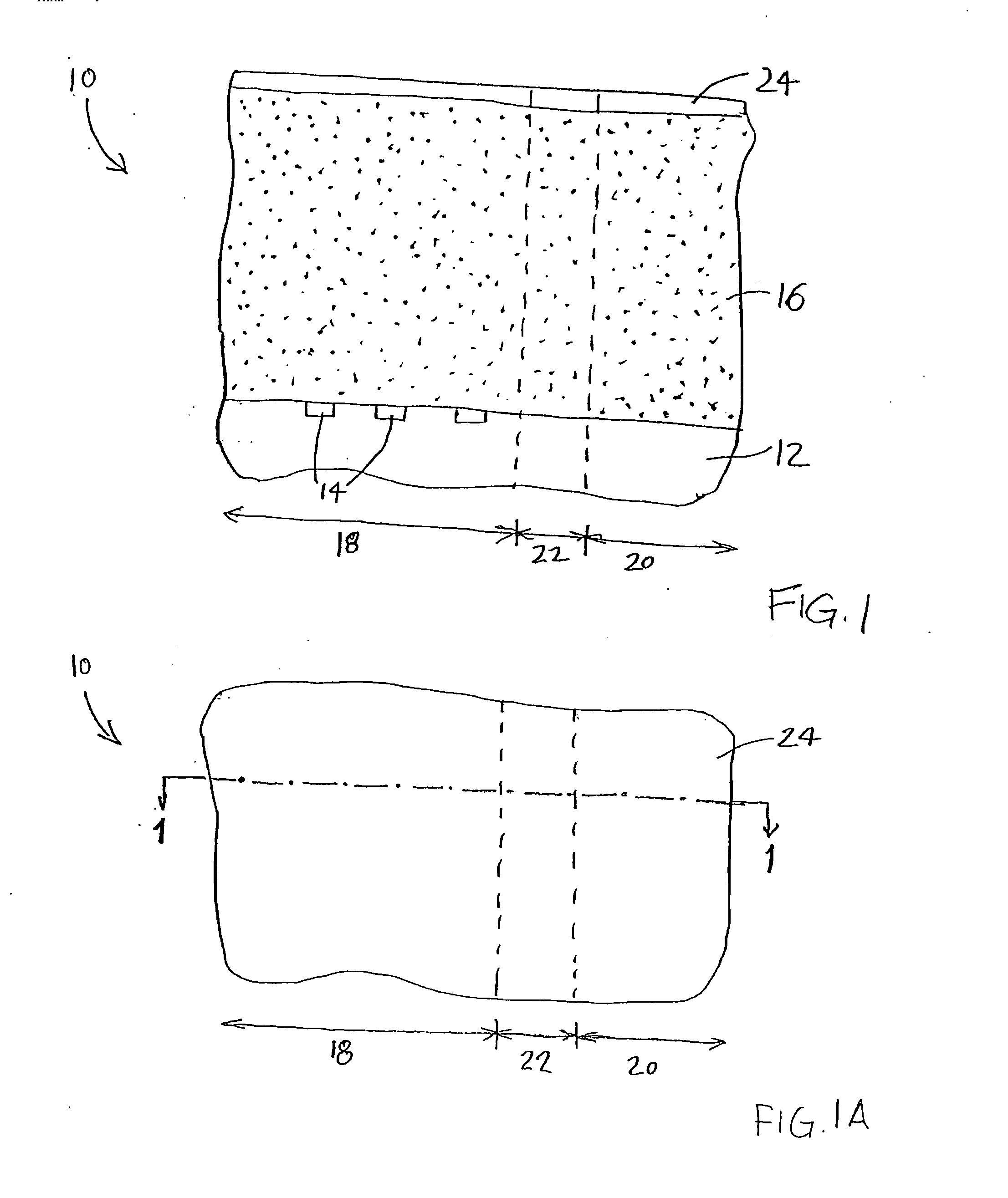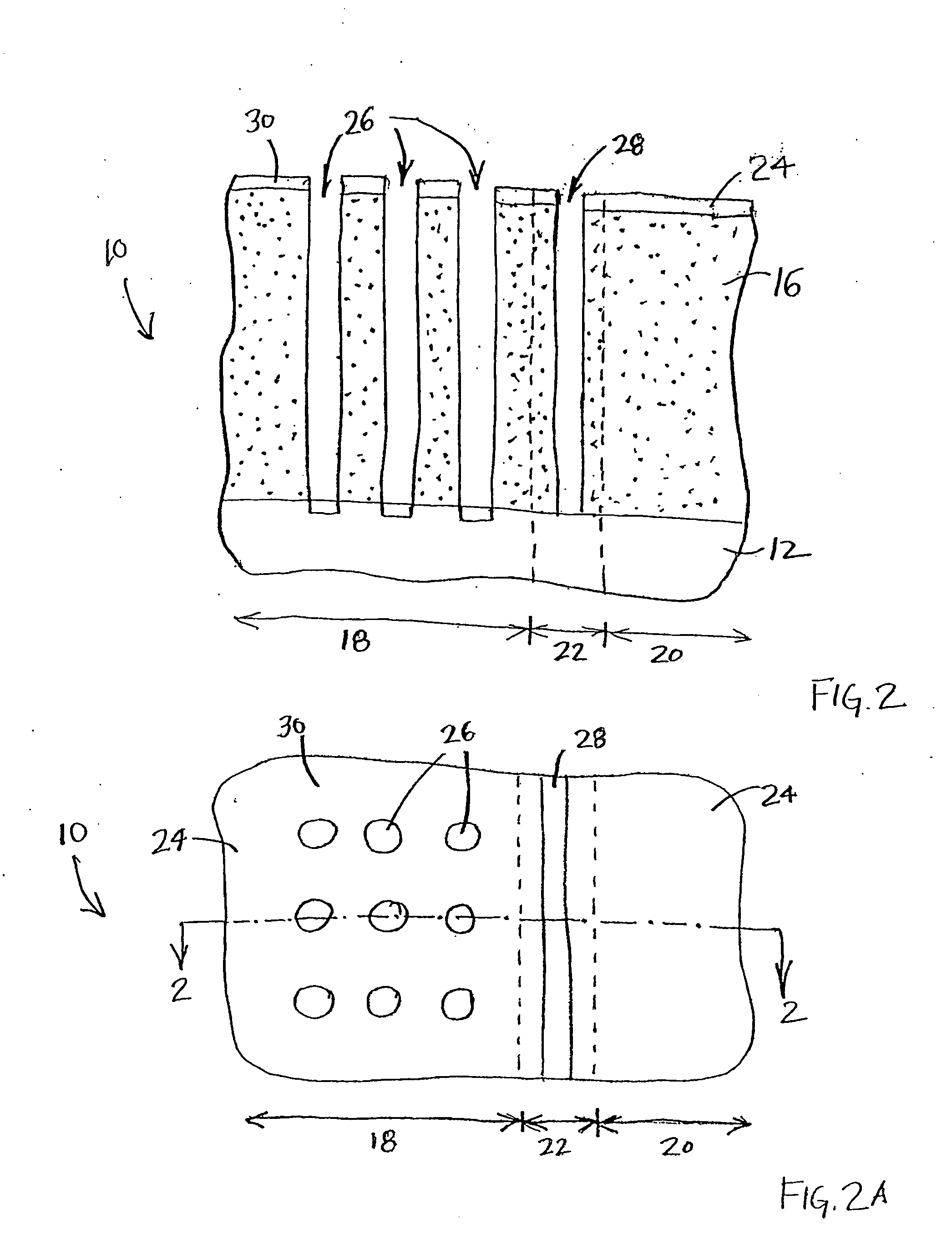Highly selective doped oxide etchant
a technology of doped oxide and high selectiveness, applied in the field of capacitor structure formation methods, can solve the problems of weak structural strength of the container, subject to collapse, and high process temperature, and achieve the effect of relatively slow etching rate and low cos
- Summary
- Abstract
- Description
- Claims
- Application Information
AI Technical Summary
Benefits of technology
Problems solved by technology
Method used
Image
Examples
example
[0055] The following example was conducted to study the effect of varying etchant formulations and v / v ratios of components on the selective removal of PSG relative to a low temperature silicon nitride (DCS SiN) and a high temperature silicon nitride (HCD SiN).
[0056] Wafers were provided with exposed layers of PSG and silicon nitride (DCS SiN or HCD SiN), and immersed for 30 seconds in a bath containing the etch solution shown in the table below. The bath temperature was room temperature (i.e., 23° C.).
[0057] The results are shown in the table below.
Selectivity1Etch Rates (Å / min)PSG:DCS-PSG:HCD-DCS SiNHCD SiNEtchant solutionRatio (v)SiNSiNPSG(725° C.)(600° C.)DI:HF (49%)210:1˜200:1˜50:1˜9600˜48˜190(comparative)DI:HF (49%):HNO3310:1:1.5˜400:1˜60:1˜14000˜35˜230(comparative)PA:HF (49%)410:1˜1200:1 ˜270:1 ˜47000˜40˜180PA:HF (49%):HNO3410:1:1 Unknown˜330:1 ˜20000Unknown˜60
1PSG = phosphosilicate glass; DSC-SiN = dichlorosilane silicon nitride (high temperature deposition); HCD-SiN = ...
PUM
| Property | Measurement | Unit |
|---|---|---|
| dielectric constant | aaaaa | aaaaa |
| dielectric constant | aaaaa | aaaaa |
| dielectric constant | aaaaa | aaaaa |
Abstract
Description
Claims
Application Information
 Login to View More
Login to View More - R&D
- Intellectual Property
- Life Sciences
- Materials
- Tech Scout
- Unparalleled Data Quality
- Higher Quality Content
- 60% Fewer Hallucinations
Browse by: Latest US Patents, China's latest patents, Technical Efficacy Thesaurus, Application Domain, Technology Topic, Popular Technical Reports.
© 2025 PatSnap. All rights reserved.Legal|Privacy policy|Modern Slavery Act Transparency Statement|Sitemap|About US| Contact US: help@patsnap.com



